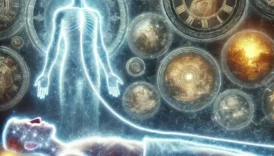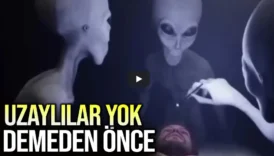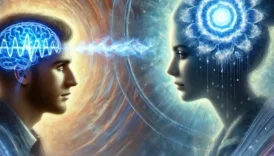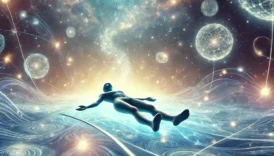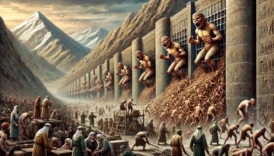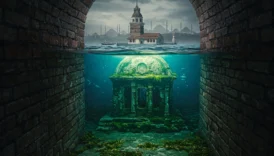Clairvoyance
What is Clairvoyance?
Clairvoyance, meaning “clear seeing” in French, refers to the ability to obtain information beyond normal sensory perception. It is considered a paranormal phenomenon within the field of parapsychology and is commonly classified into three main categories:
- Remote Viewing: The ability to perceive events or objects at a distant location without using physical senses.
- Precognition: The ability to foresee future events before they occur.
- Real-Time Perception: Gaining knowledge of hidden or unknown information that is otherwise inaccessible.
Throughout history, mystics, mediums, and spiritual leaders have claimed to possess clairvoyant abilities. Since the 20th century, scientific research has sought to analyze and understand these claims through controlled studies.
Historical Background
Clairvoyance in Ancient Civilizations
The belief in clairvoyance has been present in human history for millennia, appearing in various cultural and religious contexts.
- Ancient Egypt: Priests claimed to receive divine messages through visions. Pharaohs often consulted seers before making significant decisions.
- Ancient Greece: The Oracle of Delphi was believed to channel prophetic insights from the gods. Philosophers such as Plato and Aristotle discussed the possibility of acquiring knowledge through intuition and extrasensory perception.
- India and the Far East: Hindu scriptures like the Upanishads describe methods of acquiring spiritual knowledge through meditation and enlightenment. Yogic traditions emphasize developing extrasensory perception as part of spiritual practice.
The Middle Ages and the Renaissance
During the Middle Ages, clairvoyance was mostly viewed through a religious and mystical lens.
- Medieval Europe: The Church often associated clairvoyance with witchcraft, leading to persecution of individuals who claimed supernatural abilities.
- Islamic Mysticism: Scholars like Ibn Arabi explored spiritual visions and the concept of acquiring divine knowledge through dreams and intuition.
- Renaissance and Early Modern Period: Alchemists and occultists believed in gaining esoteric knowledge through supernatural means. Nostradamus, one of history’s most famous seers, made predictions that many believe were instances of clairvoyance.
Modern Parapsychology and Scientific Research
19th and 20th Century Investigations
The scientific study of clairvoyance began in the 19th century as part of parapsychological research.
- Society for Psychical Research (SPR): Founded in 1882 in England, the SPR was among the first organizations to systematically study clairvoyance. Researchers like Frederic Myers and Edmund Gurney conducted experiments to assess its validity.
- J.B. Rhine and Duke University Experiments: In the 1930s, J.B. Rhine at Duke University conducted tests using Zener cards to study clairvoyance and extrasensory perception (ESP). His research helped establish parapsychology as an academic discipline.
- Ganzfeld Experiments: Conducted in the 1970s, these studies aimed to eliminate sensory input to test participants’ ability to perceive information telepathically or clairvoyantly. Some statistically significant results were reported.
- CIA and the Stargate Project: In the 1970s, the U.S. Central Intelligence Agency (CIA) explored the possibility of using clairvoyance for intelligence-gathering purposes. The Stargate Project investigated claims of remote viewing, but results remained inconclusive.
Types and Mechanisms of Clairvoyance
Clairvoyance is often categorized into different forms based on its nature:
- Remote Viewing: The ability to see distant places or events without physical presence.
- Precognition: The ability to predict future events.
- Real-Time Clairvoyance: The capacity to access hidden or concealed information without conventional means.
Various theories have been proposed to explain clairvoyance:
- Quantum Entanglement Theory: Some physicists speculate that consciousness may interact with quantum fields, allowing for information transfer beyond normal physical means.
- Electromagnetic Field Interaction: Some researchers hypothesize that brain-generated electromagnetic fields could facilitate extrasensory perception.
- Collective Consciousness Theory: Carl Jung’s concept of the “collective unconscious” suggests that all human minds may be interconnected through a shared field of consciousness.
Contemporary Research on Clairvoyance
Today, clairvoyance continues to be studied in both parapsychology and neuroscience:
- Koestler Parapsychology Unit (University of Edinburgh): Conducts controlled experiments on ESP and clairvoyance.
- Stanford University Brainwave Studies: Researchers investigate whether brainwave patterns could facilitate thought transmission and paranormal perception.
Clairvoyance has intrigued humanity for centuries and remains a subject of scientific and philosophical inquiry. While some experiments have produced significant results, mainstream science remains skeptical. However, with advancements in technology and research methodologies, further exploration into clairvoyance may provide deeper insights into this fascinating phenomenon.
References
- Gauld, Alan. A History of Hypnotism. Cambridge University Press, 1992.
- Rhine, J.B. New Frontiers of the Mind: The Story of the Duke Experiments. Harper & Brothers, 1937.
- Krippner, Stanley. Advances in Parapsychological Research. Plenum Press, 1982.
- Radin, Dean. The Conscious Universe: The Scientific Truth of Psychic Phenomena. HarperOne, 1997.
- Targ, Russell & Puthoff, Harold. Mind Reach: Scientists Look at Psychic Ability. Delacorte Press, 1977.
- Sheldrake, Rupert. The Sense of Being Stared At: And Other Aspects of the Extended Mind. Crown Publishing Group, 2003.
- Broughton, Richard S. Parapsychology: The Controversial Science. Ballantine Books, 1991.
- Tart, Charles T. The End of Materialism: How Evidence of the Paranormal is Bringing Science and Spirit Together. New Harbinger Publications, 2009.
- Cardeña, Etzel, John Palmer & David Marcusson-Clavertz (Eds.). Parapsychology: A Handbook for the 21st Century. McFarland, 2015.
Views: 1
